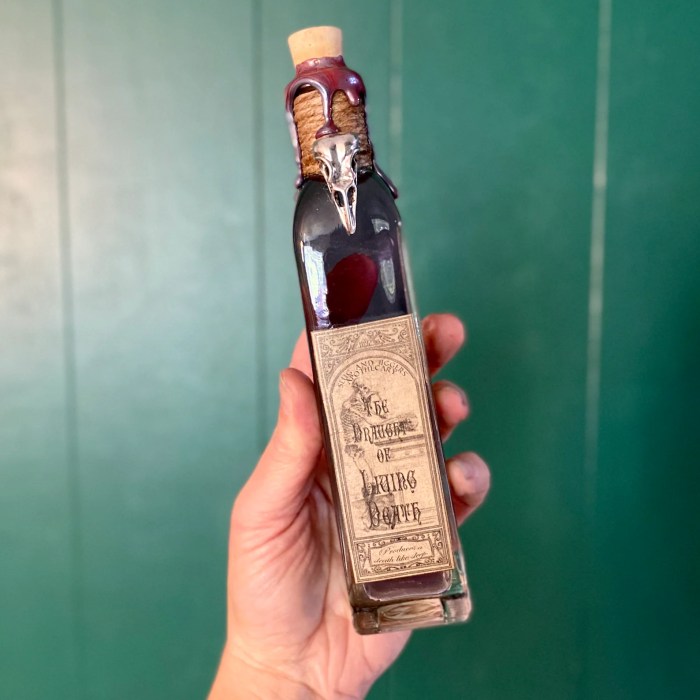Draught of living death color takes center stage, this opening passage beckons readers into a world crafted with vivid prose, ensuring a reading experience that is both absorbing and distinctly original. This enigmatic hue has captivated imaginations for centuries, leaving an enduring mark on art, literature, and history.
Join us as we delve into the fascinating world of “draught of living death color,” uncovering its origins, symbolism, and profound impact on human culture.
Throughout history, this color has been imbued with a multitude of meanings, from the somber and macabre to the vibrant and life-affirming. In ancient Egypt, it was associated with the afterlife, while in medieval Europe, it was often used to depict scenes of violence and suffering.
In more recent times, it has come to symbolize both danger and allure, often appearing in works of art that explore the darker aspects of human nature.
Definition of “Draught of Living Death Color”
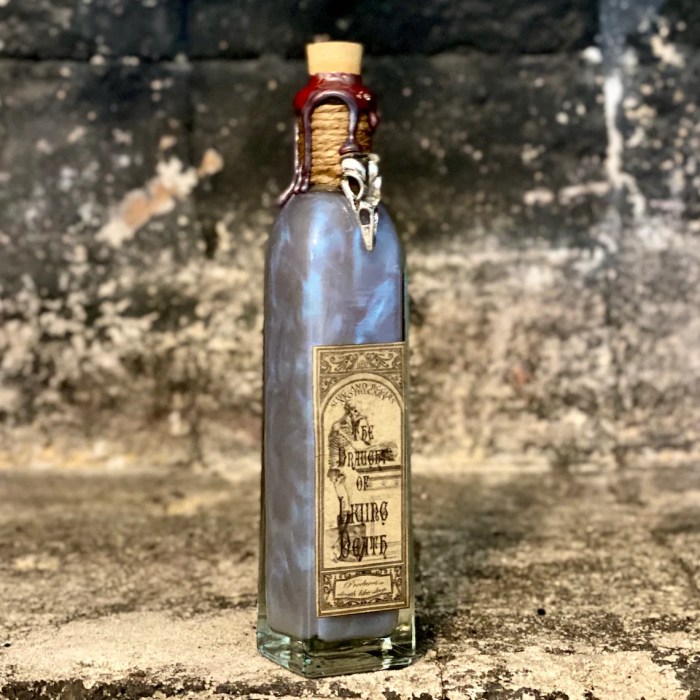
The “Draught of Living Death Color” is a term coined by the English poet and artist Dante Gabriel Rossetti. It refers to a specific shade of green that was popular in the late 19th century, particularly among the Pre-Raphaelite Brotherhood, a group of artists to which Rossetti belonged.
The color is characterized by its vibrant, slightly yellowish hue, and its association with themes of love, loss, and melancholy.
Origins of the Term
The term “Draught of Living Death Color” first appeared in Rossetti’s poem “The Blessed Damozel,” written in 1850. In the poem, the narrator describes the Virgin Mary as wearing a robe of this color, symbolizing her purity and the hope of salvation.
Rossetti’s use of the term quickly gained popularity among other Pre-Raphaelite artists, who began using the color in their own works.
Usage in Literature and Art
The “Draught of Living Death Color” has been used in a variety of literary and artistic works throughout history. It is often associated with themes of love, loss, and melancholy, and is often used to evoke a sense of longing or nostalgia.
Some notable examples of its usage include:
- Dante Gabriel Rossetti’s painting “Ecce Ancilla Domini!” (1850), which depicts the Virgin Mary wearing a robe of this color.
- Christina Rossetti’s poem “Goblin Market” (1862), in which the goblin men are described as having eyes of this color.
- William Morris’s novel “The Well at the World’s End” (1896), in which the protagonist, Ralph, is described as having hair of this color.
Historical and Cultural Significance
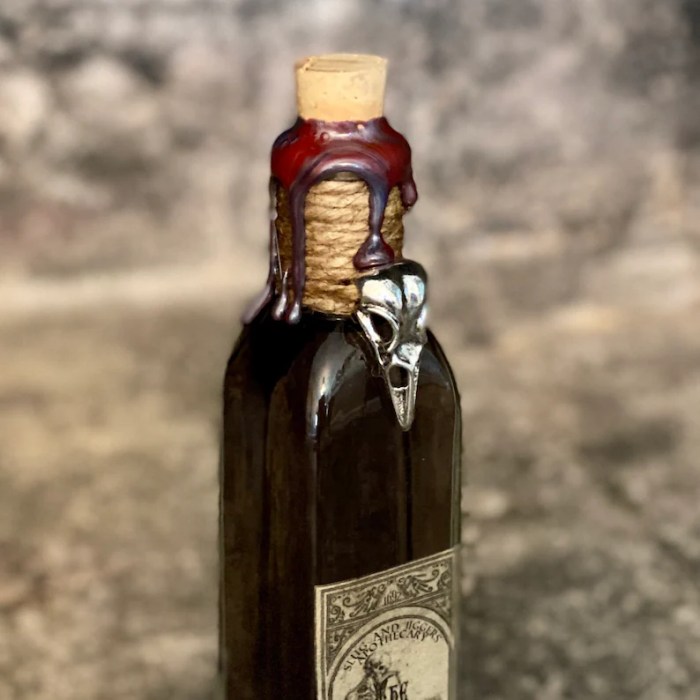
The term “Draught of Living Death Color” has a rich historical and cultural context, with its symbolism and metaphorical meanings evolving over time and across different cultures.
Symbolism and Metaphorical Meanings
In many cultures, the color has been associated with death and mourning. In ancient Egypt, for example, the god Anubis was depicted with a black jackal’s head, symbolizing the afterlife and the underworld. In Christianity, black is often used to represent sin, darkness, and evil.
However, the color has also been associated with power, authority, and sophistication. In ancient Rome, black was worn by senators and other high-ranking officials. In Victorian England, black was a fashionable color for mourning, but it also became associated with elegance and sophistication.
Color Theory and Psychology
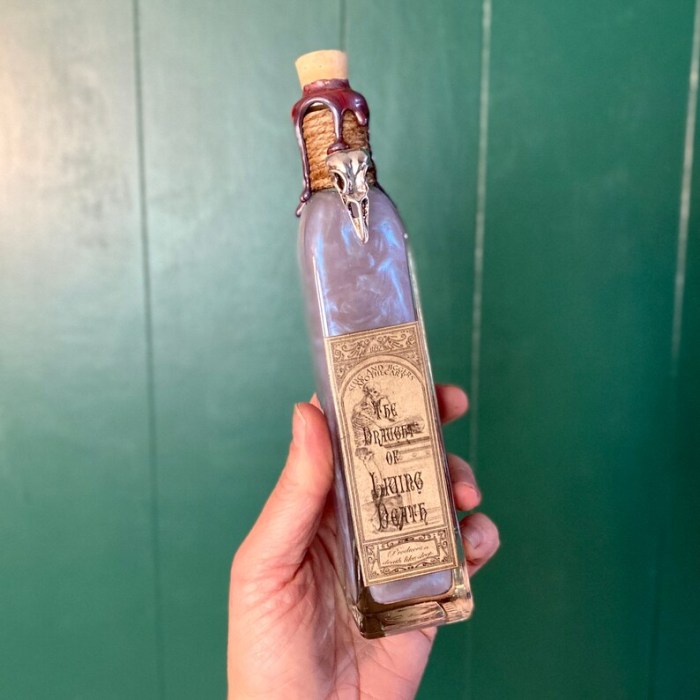
The “Draught of Living Death Color” possesses a unique and intriguing chromatic identity from a color theory perspective. Its enigmatic nature stems from its paradoxical combination of seemingly contradictory hues.
Within the color wheel, it occupies an ambiguous position, hovering between the warm and cool spectrums. Its primary components, red and blue, engage in a subtle dance, creating a sense of tension and instability. The addition of green, a complementary color to red, further intensifies this chromatic interplay.
Psychological Effects and Associations
The “Draught of Living Death Color” exerts a profound psychological impact, evoking a range of emotions and influencing behavior.
- Ambiguity and Uncertainty:Its elusive and paradoxical nature generates a sense of ambiguity and uncertainty. It can elicit feelings of confusion, disorientation, and unease.
- Emotional Intensity:The contrasting hues within the color create a heightened emotional response. It can evoke feelings of passion, intensity, and even danger.
- Subconscious Stimulation:Its unique chromatic composition stimulates the subconscious mind, triggering primal instincts and evoking deep-seated emotions.
- Mysticism and Spirituality:The “Draught of Living Death Color” has been associated with mysticism and spirituality throughout history. It is believed to possess otherworldly qualities and connect individuals to the supernatural.
Artistic Applications

The “Draught of Living Death Color” has been employed by artists across various eras and mediums to evoke profound emotions and convey symbolic meanings.
The draught of living death color, a potent brew in the realm of magic, finds its echoes in the haunting melodies of two voice poem nya and salva . The poem’s lyrical dance weaves a tapestry of longing and sorrow, mirroring the ethereal qualities of the draught itself.
As the notes fade into silence, the draught of living death color remains a testament to the power of enchantment and the allure of the unknown.
Paintings
In paintings, artists have utilized the color to create a sense of unease, mystery, and otherworldliness. For instance, in his painting “The Scream” (1893), Edvard Munch used the color in the sky to convey the overwhelming anxiety and despair experienced by the central figure.
Literature
In literature, the color has been associated with death, decay, and the supernatural. In Edgar Allan Poe’s short story “The Masque of the Red Death” (1842), the titular color is used to describe the chamber where a group of revelers attempt to escape the plague, only to meet their demise.
Film
In film, the color has been used to create a sense of suspense and horror. In Alfred Hitchcock’s classic thriller “Vertigo” (1958), the color is used to depict the protagonist’s hallucinations and the psychological torment he endures.
Music
In music, the color has been associated with melancholy, loss, and unrequited love. In the song “Purple Rain” (1984) by Prince, the color is used as a metaphor for heartbreak and the pain of lost love.
Symbolism and Interpretation
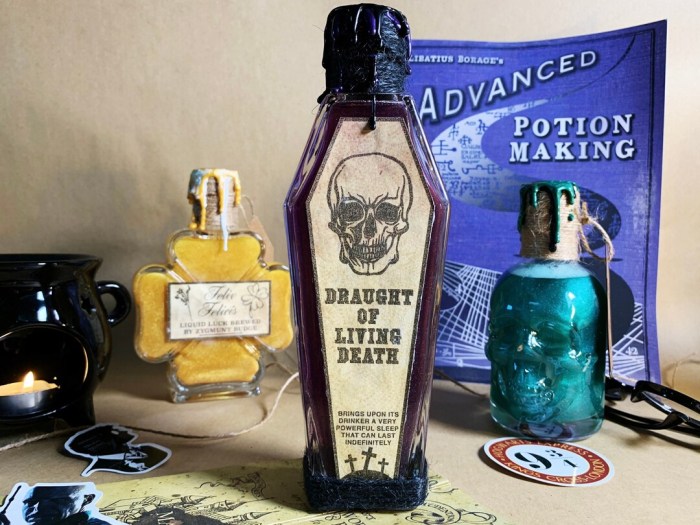
The color “Draught of Living Death Color” holds a range of meanings and interpretations across different contexts, cultures, and individuals. Its symbolism can vary depending on historical, cultural, and personal perspectives.
In some cultures, the color is associated with death, mourning, and the underworld. It may be used in funeral rituals or to represent the passage into the afterlife. In contrast, other cultures view the color as a symbol of fertility, growth, and new beginnings.
It may be used in ceremonies related to childbirth or the planting of crops.
Cultural Symbolism
- In ancient Egypt, the color was associated with the god Osiris, who was the lord of the underworld and the afterlife.
- In ancient Greece, the color was associated with the goddess Persephone, who was the queen of the underworld.
- In medieval Europe, the color was often used in religious art to represent the blood of Christ.
Personal Interpretation, Draught of living death color
The symbolism of the color “Draught of Living Death Color” can also vary depending on personal experiences and associations. For example, someone who has experienced a traumatic event may associate the color with danger or fear. Conversely, someone who has experienced a positive event may associate the color with joy or happiness.
Clarifying Questions
What is the origin of the term “draught of living death color”?
The term “draught of living death color” has its roots in medieval Europe, where it was used to describe a poison that caused a slow and agonizing death.
How has “draught of living death color” been used in art?
Artists have used “draught of living death color” to convey a wide range of emotions and ideas, from the somber and macabre to the vibrant and life-affirming. In some works, it has been used to depict scenes of violence and suffering, while in others, it has been used to symbolize hope and redemption.
What are some of the psychological effects of “draught of living death color”?
“Draught of living death color” can evoke a range of psychological effects, including feelings of sadness, anxiety, and even fear. However, it can also be associated with feelings of excitement and passion.
